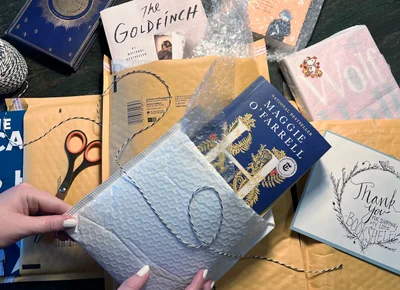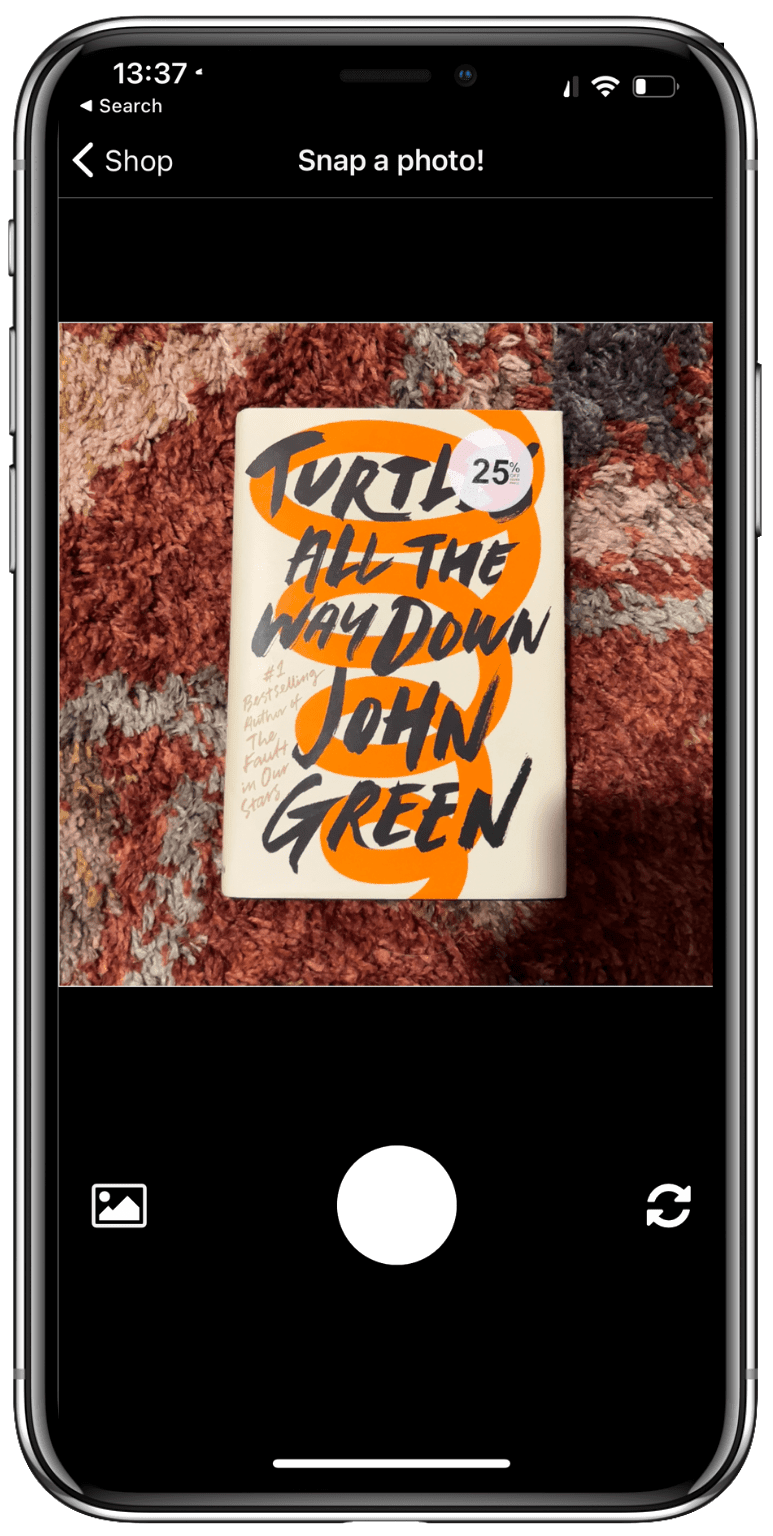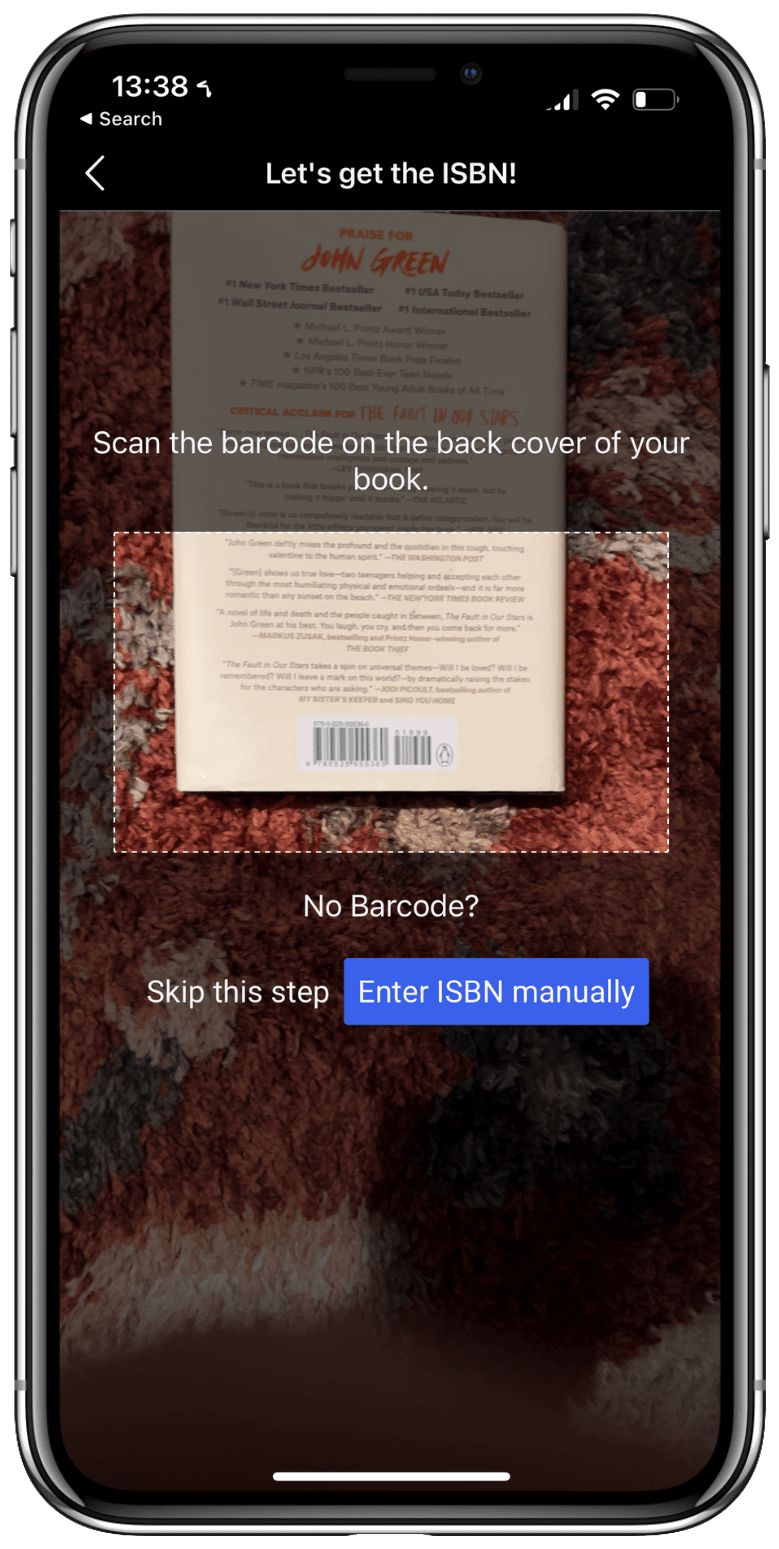Scanning the Barcode (If There Is One)
After you take your first picture for your listing, you’ll be asked to scan the barcode on the book which identifies its ISBN (International Standard Book Number). Doing so will tap into our book product database and fill in as many details about the book you are selling as possible including the title, author, genre, and more. We encourage you to always check to make sure this information is accurate and feel free to update if necessary.
If there is not a barcode or ISBN present, you will have to fill everything in manually, but that still only takes a minute or two in most instances. In some cases where there is an ISBN, we may not have any info on the title yet, and here too, you will need to enter the information from scratch.
Fill in the Details and Write a Description
The next step in completing your listing is to fill in any fields that were not auto-filled by the ISBN/barcode scan. This includes writing a description and adding hashtags to help people discover your book.
With the description, you can choose to keep this short, but it never hurts to add any thoughts that might help a potential buyer decide to buy the book. Some ideas here include a short summary or some suggestions of the sort of readers that might like the title. You should also use this space to specify any conditional issues with the book even if you’ve shown these in your photos.
In this same space, you add hashtags to specify the book's style, genre, or anything else you want. Hashtags can be a little confusing for new sellers but are a vital part of how we serve your books to potential buyers. We have a dedicated article on how to use hashtags on Pango that you can read here.
Choosing the Right Condition For Your Book Listing
On PangoBooks we have a six-point scale of condition which goes top to bottom: New, Like New, Excellent, Good, Fair, and Poor. For full information on what each of these ratings means, take a look at this page about book conditions in our help center.
As a general guideline, we recommend erring on the more conservative side when rating your books and communicating any issues via your photos and description. For instance, books that have been opened or read even once should never be rated as in New condition even if they are basically brand new. Similarly, books with visible damage should almost always go into Good or Fair condition as opposed to Excellent.
Pricing Your Books
As mentioned near the top of this page, there are a ton of different factors to consider when pricing used books, most of which are determined by the relative supply and demand of any particular title or edition. Generally speaking, we recommend starting with 50% off the original retail price (which can often be found on the book's back cover or inside the dust jacket) and moving down from there based on the book’s condition and relative availability (and popularity) on the market.
Doing a search for other listings for the same title can give you a sense of where other sellers are pricing their copies. Needless to say, putting your price below everyone else’s will certainly help you sell your book quickly.
Take a look at this blog post for more tips on used book pricing.
_jpg_1642623763117_0?alt=media&token=3f03ccbf-60b1-4497-a987-b9104db1dbee?auto=webp&format=webp&width=400&quality=85)






_png_1663190247129_0_png_1672694445191_0?alt=media&token=e26d6763-fbde-42cc-8e82-832ffbd193de?auto=webp&format=webp&width=800&quality=85)